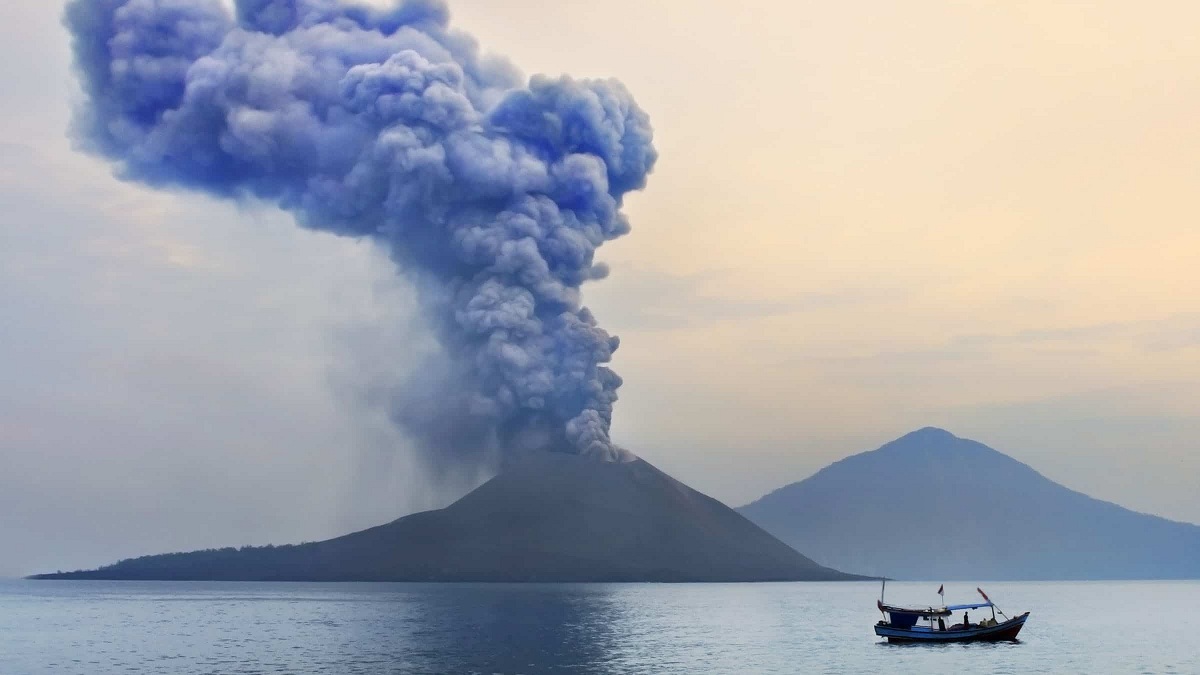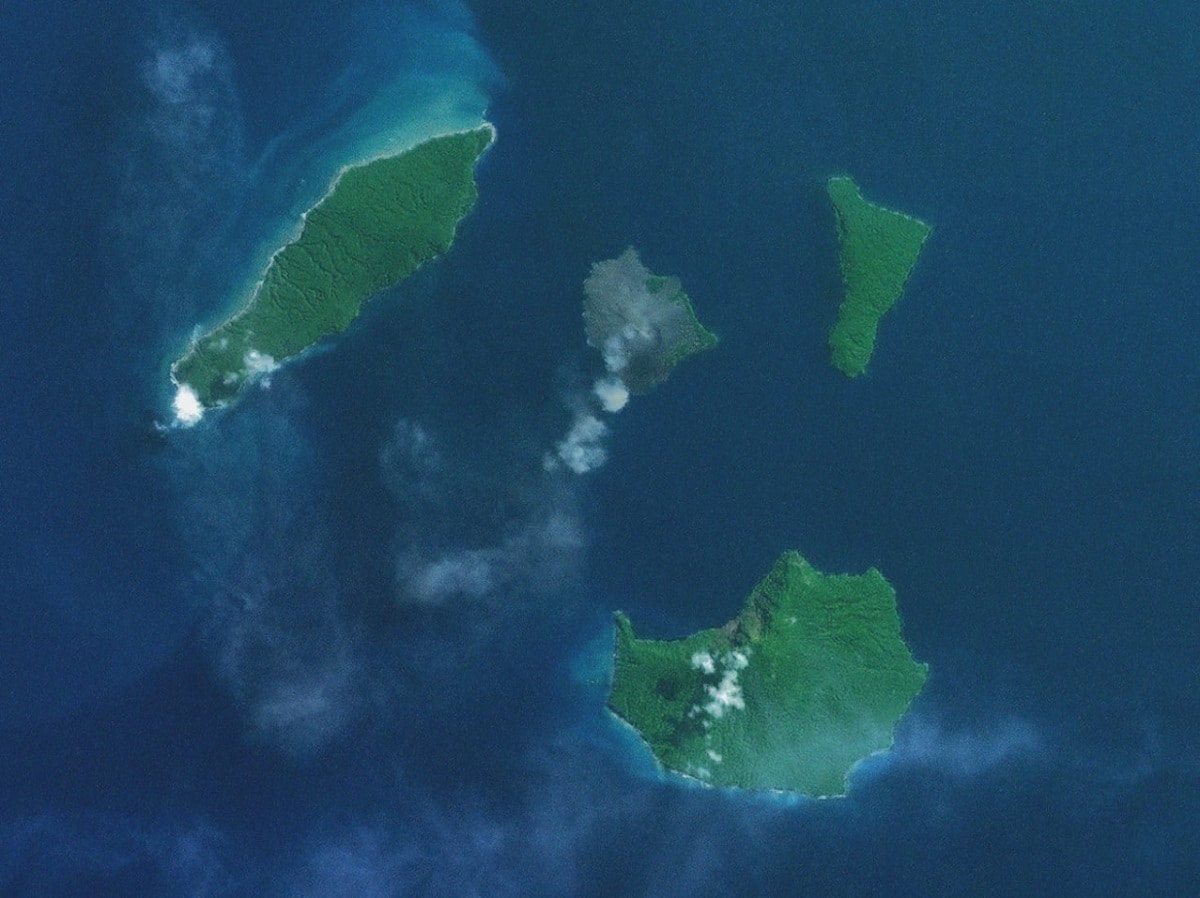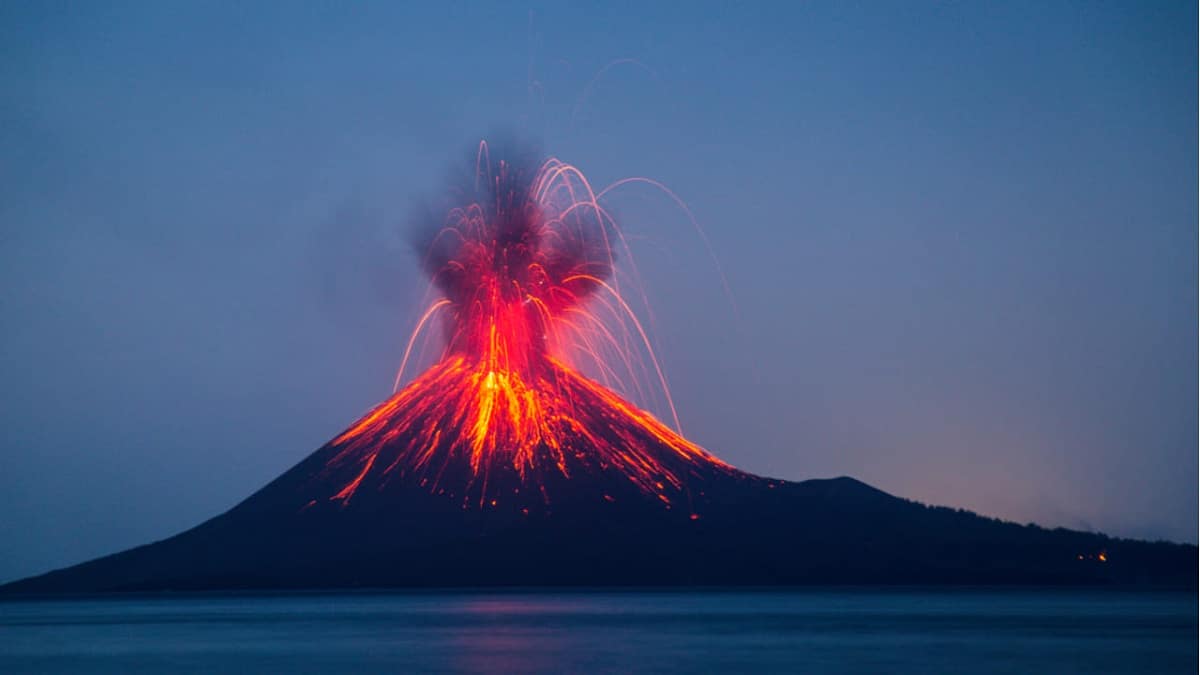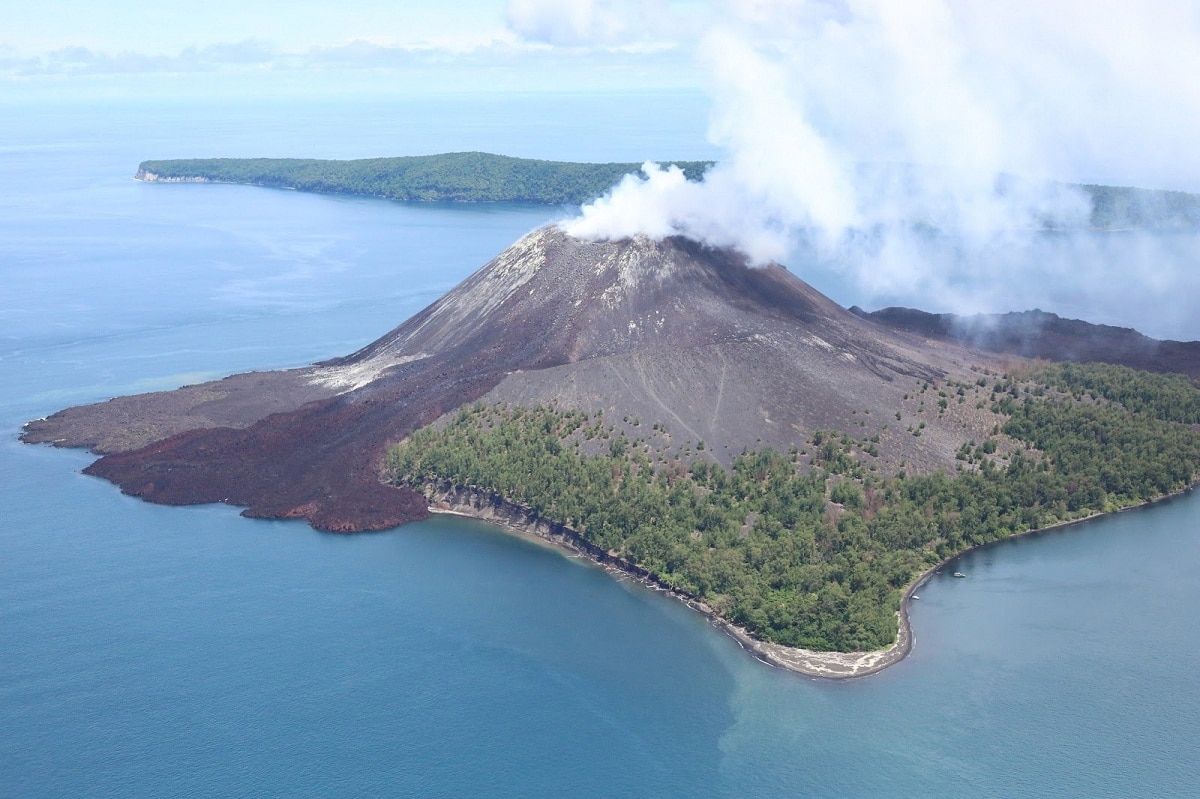
When we refer to the name of Krakatoa we are referring to a volcanic island that is located in the Sunda Strait of the Lampung province, between Java and Sumatra, Indonesia. Although it is called Krakatoa volcano, of this island had 3 volcanic cones. It became famous for the serious disaster it caused in 1833 when the volcanic eruption devastated the entire island and affected the closest regions.
In this article we are going to tell you everything you need to know about the origin, formation and characteristics of the Krakatoa volcano.
Key features

Indonesia is a highly volcanic country because it has around 130 active volcanoes, more than any other country in the world. Therefore, it is not uncommon for residents to witness relatively frequent eruptions and eruptions of varying intensity. The Krakatoa volcano is a stratovolcano, which is made up of lava, ash, pumice, and other pyroclastic materials.
The island is 9 kilometers long, 5 kilometers wide and has an area of about 28 square kilometers. Lakata in the south is 813-820 meters above sea level; Pebu Atan in the north is 120 meters above sea level and Danan in the center is 445-450 meters above sea level.
Since Krakatoa is a stratovolcano and this type of volcano is often found above subduction zones, it is found on the Eurasian plate and the Indo-Australian plate. The subduction zone is the point where the oceanic crust is destroyed because convection currents converge there. As a result, one tectonic plate sinks under another.
Before the 1883 volcanic eruption, Krakatoa was part of a small group of nearby islands: Lang, Venlaten, and the Poolsche Hoed islet, as well as other smaller islands. These are all the remnants of previous large-scale volcanic eruptions, which occurred sometime in the prehistoric period and formed a 7 kilometer long crater or depression between them. The remnants of ancient volcanic eruptions began to merge, and after many years, due to the activity of tectonic plates, the cones coalesced to form Krakatoa Island.
Krakatoa volcano eruptions

The Krakatoa volcano is known as one of the most destructive volcanoes on record. In fact, layered volcanoes are characterized by explosive eruptions because their lava contains a large amount of igneous andesite and dacite, making it very viscous and causing the gas pressure to build up to very high levels.
There is no clear record of very old volcanic eruptions. In 416 d. C., this was mentioned in the manuscript "Pararaton or Book of the Kings" on the history of the kings of East Java. C. There is an explosion that has not yet been confirmed in history. Presumably, in AD 535. C. The eruption took place over several months, which had a major impact on the climate of the Northern Hemisphere.
It appears that there were two eruptions in 1681, which were seen and recorded in the diaries of the Dutch navigators John W. Vogel and Elias Hesse. In the following years, the volcanic activity was still intense, but then it subsided and it no longer seemed dangerous to the locals. Even in the early 1880s, the Krakatoa volcano was considered extinct because the last major eruption occurred in 1681. However, this situation was about to change.
On May 20, 1883, Perbuatan began to emit dust and ash. That morning, the captain of the German ship Elizabeth reported having seen clouds about 9-11 kilometers high on the uninhabited island of Krakatoa. By mid-June, the Perbuatan crater was almost destroyed. The activity did not stop, but in August it gained a catastrophic scale.
Around 1 p.m. on Sunday, August 26, Krakatoa experienced its first large-scale eruption, as the deafening explosion created a cloud of debris that sIt rose 25 kilometers above the island and spread north until it reached at least 36 kilometers in height. The worst happened the next day: due to the accumulated pressure, there were 4 explosions in the morning, which almost blew up the island. In August 1883, there were four explosions that completely destroyed the island.
The noise produced has been considered the largest sound in history and broke the eardrums of the people closest to the area. This sound was heard approximately 3.110 kilometers from Perth, Western Australia and Mauritius. Due to the violent explosion, a tsunami occurred, the waves reached a height of about 40 meters and moved towards the west coast of Sumatra, West Java and nearby islands at a speed of about 1.120 kilometers per hour. The death toll exceeded 36.000.
The dust and gas released by the Krakatoa volcano in 1883 remained in the atmosphere for up to 3 years. The volcano disappeared and a new crater was created, and it was not until 1927 that the area began to show signs of volcanic activity. A new volcanic island appeared in 1930 and was later named Anak Krakatoa (the son of Krakatoa). The island grows as the years go by.
Climate, flora and fauna

The island has a warm and humid climate with a temperature between 26 ° and 27 ° Celsius. The massive eruption wiped out all life in the area and reappeared in 1927 as the Anak Krakatoa volcano. But overall, there are 40.000 species of plants in Indonesia, including 3.000 trees and 5.000 orchids. The northern lowlands of the region are dominated by rainforest vegetation, and the southern lowlands are dominated by mangroves and nipa palms.
The fauna is made up of species from tropical regions of Africa and America, but each island has different species. Orangutans can only be seen in Sumatra and Borneo; tigers in Sumatra and Java, bison and elephants in Java and Borneo, only tapir and siamang in Sumatra.
As you can see, there are volcanoes that have really marked a before and after in history. I hope that with this information you can learn more about Krakatoa volcano and its characteristics.